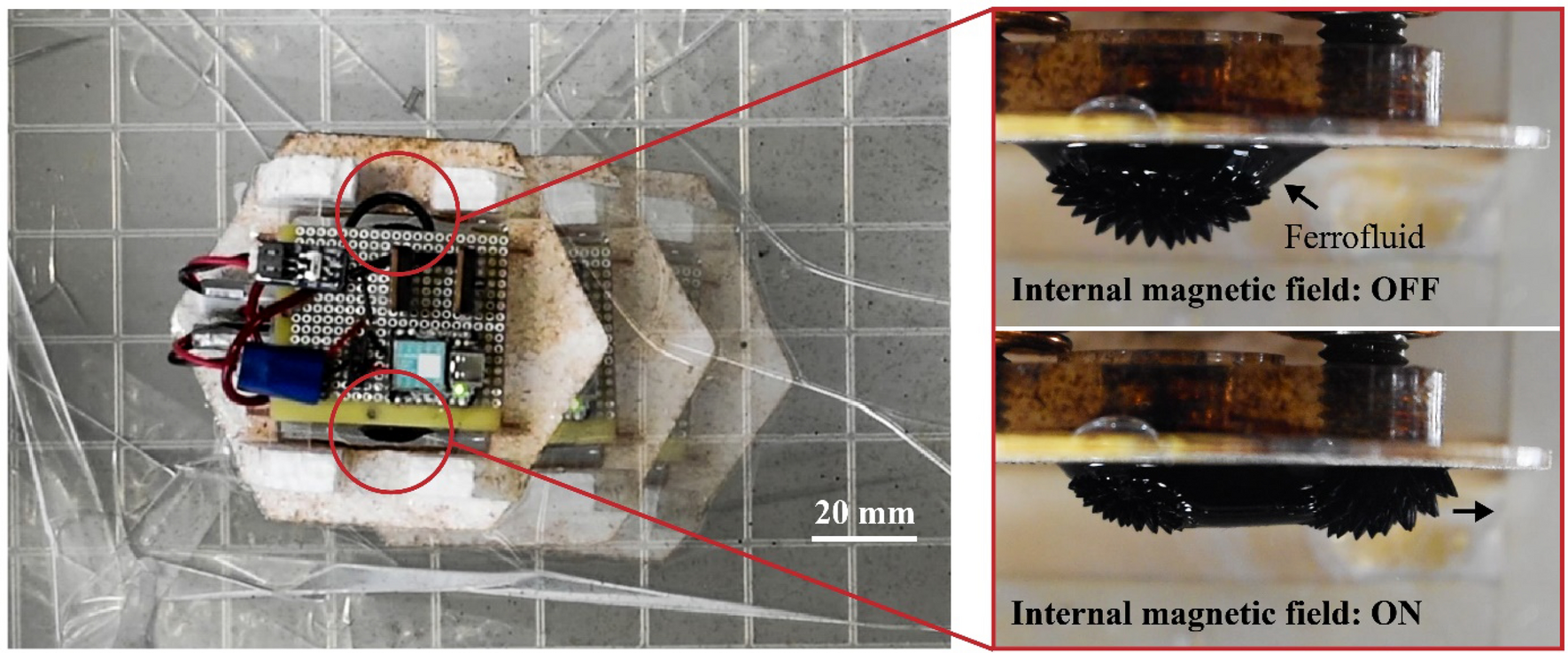Jellyfish robots Indeed, I am aware of that. It’s fascinating to note that tiny jellyfish robots are being controlled by light through the use of ferrofluid technology. This groundbreaking development in robotics is reshaping our understanding of remote-controlled devices. Join me as we delve into the captivating realm of these cutting-edge jellyfish robots and explore how they are shaping the future of technology.
Cutting-edge jellyfish robots are currently in development, utilizing advanced light and ferrofluid technology for precise control. These robots are poised to transform a wide range of industries and fields due to their exceptional capabilities.
1. The Tiny Jellyfish Robots are a new innovation in robotics that are designed to mimic the movements of jellyfish in water.
The development of tiny jellyfish robots is a major breakthrough in robotics as they mimic the movements of jellyfish in water. These robots are equipped with advanced technological capabilities, enabling them to navigate through water with precision and efficiency. They have the potential to be utilized in environmental monitoring, underwater exploration, and even in the field of medicine. The development of these robots signifies a significant advancement in the field of robotics and has the potential to revolutionize various industries.

Jellyfish robots The small jellyfish robots represent a groundbreaking advancement in robotics, as they have been specifically engineered to mimic the movement of jellyfish in water. jellyfish robots This feature makes them an invaluable tool for conducting underwater exploration and surveillance. Their pliable and adaptable design allows them to effortlessly navigate through water, making them ideally suited for tasks such as monitoring ocean conditions or studying marine life. This innovative technology has the potential to revolutionize the methods used for underwater research and exploration.
The latest innovation in robotics is the development of tiny jellyfish robots, designed to imitate the graceful movements of jellyfish in water. These robots are being created to enhance underwater surveillance and monitoring by providing greater efficiency and manoeuvrability. jellyfish robots Equipped with flexible and translucent silicone bodies, they use pulsating movements to propel themselves through the water, mimicking the natural movement of real jellyfish.
This groundbreaking technology has the potential to revolutionize underwater exploration and monitoring in fields such as marine biology, environmental monitoring, and underwater infrastructure inspection.
2. Fluoride technology is used in the construction of these robots,
Jellyfish robots The incorporation of ferrofluid technology is essential for the advancement of these robots, allowing them to execute precise and fluid movements. This innovative technology provides the robots with enhanced control and flexibility, making them highly capable of performing intricate and precise tasks. Its integration has revolutionized the field of robotics, opening up new possibilities for its use in healthcare, manufacturing, and other industries.

Ferrofluid technology is essential for the construction of these robots, as it is a liquid that becomes highly magnetized when exposed to a magnetic field. This allows the robots to achieve precise and dynamic movements, providing a high degree of control and flexibility. As a result, these robots are suitable for a wide range of applications.
The integration of ferrofluid technology in robotics is crucial for achieving precise movement and control. By harnessing the unique properties of fluorides, engineers can design robots with a wider range of motion and flexibility, making them ideal for complex tasks and movements. Jellyfish robots This technology enables robots to adapt to various environments and execute intricate operations with ease, showcasing the potential for advancements in robotics.
3. Light is used to control the robots, with the ferrofluid reacting to changes in light intensity to
Scientists have employed light as a method of manipulation to control ferrofluid and generate precise movements in robots. This groundbreaking technique enables accurate and adaptable control, expanding the potential applications of ferrofluid in robotics. The capacity to utilize light to guide the actions of the robots demonstrates the potential for progress in this field.
The researchers successfully manipulated the robots’ behavior by adjusting the light intensity and direction, allowing them to navigate complex tasks. Jellyfish robots This novel approach to light manipulation has promising implications for advancing robotics and improving precision and efficiency in a wide range of applications.

The manipulation of light is essential for controlling the robots, as it directly influences the behavior of the ferrofluid. Changes in light intensity prompt responses from the ferrofluid, enabling precise and efficient control of the robots. This innovative use of light allows for the manipulation of the ferrofluid, ultimately influencing the movement and actions of the robots.
4. Potential applications for these robots include environmental monitoring, underwater exploration, and medical procedures.
Robots are increasingly versatile and are being utilized across a wide range of industries. They have the potential to be used for environmental monitoring, underwater exploration, and medical procedures, among other tasks. Advanced robots are capable of handling tasks that are too risky or challenging for humans, making them valuable tools in various fields. As technology advances, the potential uses for robots will only continue to expand.
Robots have a diverse range of potential applications, from environmental monitoring and underwater exploration to medical procedures. They are capable of gathering data in remote or hazardous environments, like deep-sea exploration or disaster zones. In the medical field, they have the potential to assist in minimally invasive surgeries and other delicate procedures. Their versatility makes them a valuable tool in various industries and research fields.
Robots have the potential to bring about significant changes in a variety of industries, such as environmental monitoring, underwater exploration, and medical procedures. In the realm of environmental monitoring, robots can gather data in hard-to-reach or hazardous areas, offering valuable insights for researchers and decision-makers. Underwater exploration can also be enhanced through the use of robots equipped with sensors and cameras to map and explore the ocean floor. In the field of medicine, robots hold promise for aiding in intricate surgical procedures and providing assistance to healthcare professionals. The potential applications for these robots are wide-ranging and present exciting prospects for the future.
5. Future developments and research opportunities include further refining the control mechanisms, increasing the robots’ capabilities, and exploring new potential applications in various industries.
The field of robotics is filled with numerous potential future developments and research opportunities to delve into. These encompass improving control mechanisms, enhancing robots’ abilities, and discovering novel applications across different industries. With the ongoing advancement of technology, there is significant potential for integrating robotics into fields such as manufacturing, healthcare, transportation, and entertainment. The opportunities for innovation and expansion in this domain are extensive, and researchers and developers are continuously seeking new methods to improve the capabilities and functionality of robots for the betterment of society.

The future of robotics includes further refining control mechanisms to enhance precision and efficiency. Additionally, there is potential for expanding robots’ capabilities, such as increasing their range of motion and ability to perform complex tasks. Ongoing exploration of new potential applications for robotics in industries like healthcare, manufacturing, and agriculture is also underway. These advancements will continue to push the boundaries of what robots can accomplish and how they can be integrated into different fields.
The field of robotics is constantly evolving with exciting future developments and research opportunities. One area of focus is improving control mechanisms to enhance the precision and efficiency of robots. Additionally, there is potential for increasing the capabilities of robots to perform more complex tasks. Furthermore, researchers are exploring new potential applications for robots in various industries, which could lead to innovative uses and advancements in technology.
Interested in Reading My Article On:The oil rig game offers an immersive experience of a turbulent setting



